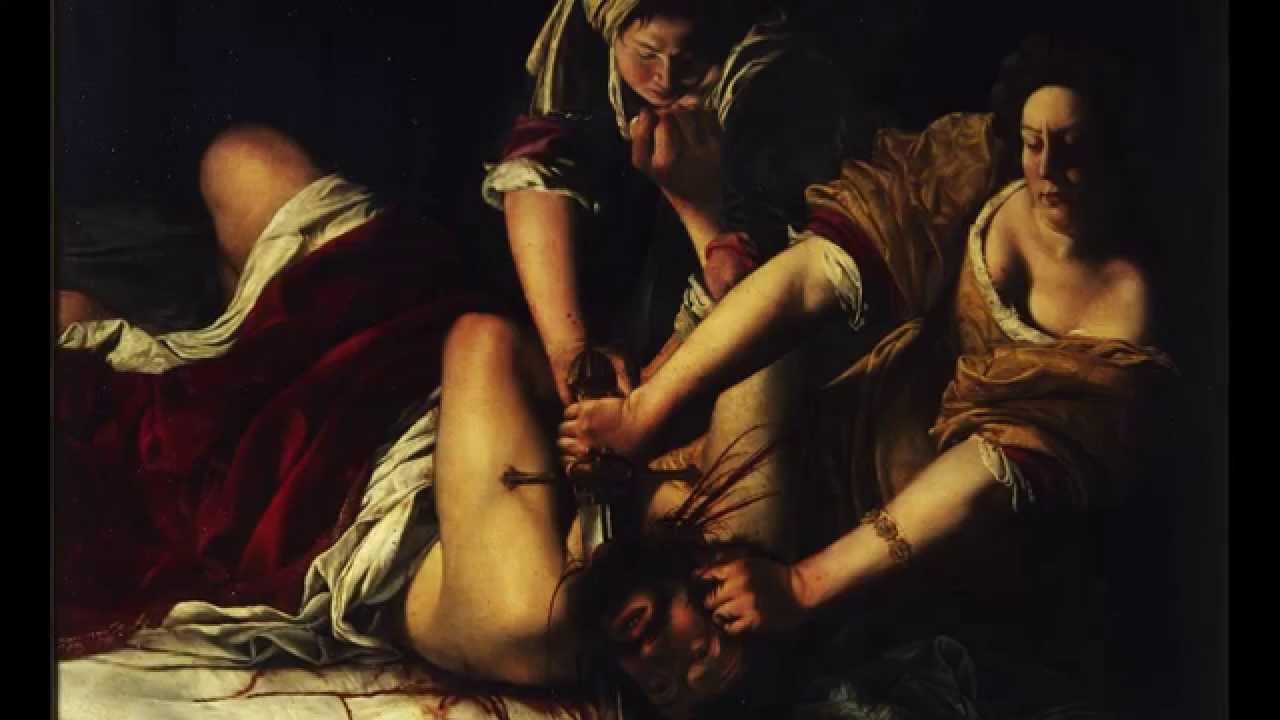
Robert Draws – Judith Slaying Holofernes is one of the most powerful and dramatic works by Artemisia Gentileschi. Painted in the early 17th century, this masterpiece presents a bold portrayal of female heroism. The artwork depicts the biblical story of Judith, a widow who decapitates Holofernes, the Assyrian general, to save her people. Gentileschi’s rendition emphasizes both strength and emotion. This painting is celebrated for its raw realism and vivid depiction of violence. It challenges traditional gender roles and offers a feminist interpretation of an ancient tale.
Artemisia Gentileschi was one of the few female artists to gain recognition during the Baroque period. Her work often revolved around strong women, and Judith Slaying Holofernes is a prime example. The painting stands out for its intense emotion and dynamic composition. Unlike other representations of Judith, Gentileschi focuses on the raw brutality of the moment. The strength of Judith’s action is portrayed through the muscular tension in her body and the bloodied knife in her hand. Gentileschi’s use of chiaroscuro—strong contrasts of light and shadow—adds to the dramatic effect, highlighting the physicality of the scene.
Judith’s facial expression is also telling. She shows both determination and fury. Her gaze is intense, reflecting a woman who is not only saving her people but also taking control of her own fate. This strong portrayal of female power was rare during an era where women were often depicted as passive or subjugated.
“Read about: Sfumato in Painting: How to Blur the Lines for Perfect Gradients”
Gentileschi’s Judith Slaying Holofernes is often viewed as a feminist statement. The painting challenges the typical depiction of women in art during the Baroque period. Women were generally portrayed in submissive or passive roles. However, Gentileschi’s Judith is an active agent, asserting her power and agency. She is not a passive victim; instead, she takes control of the situation and decisively ends the life of her enemy.
This strong portrayal of Judith can also be seen as a personal statement for Gentileschi. The artist was herself a survivor of sexual assault, and her work frequently explores themes of revenge and justice. Judith, in this sense, becomes a symbol of female empowerment and defiance. The act of slaying Holofernes can be interpreted as a form of vengeance, mirroring Gentileschi’s own struggle for justice and recognition in a male-dominated art world.
The painting’s graphic depiction of violence makes it a striking example of Baroque realism. The blood pouring from Holofernes’ neck, the physical struggle, and the sense of urgency in Judith’s actions create a vivid and almost visceral experience for the viewer. The brutality of the scene is not sugar-coated; instead, Gentileschi embraces it, showing the reality of Judith’s actions. This approach is in stark contrast to more restrained or idealized depictions of violence in art from the same period.
Gentileschi’s commitment to realism extends beyond the physical violence. The characters are painted with a great deal of attention to detail. Holofernes is shown with a look of surprise and fear, while Judith and her maidservant are portrayed with strength and resolve. The tension between these figures heightens the emotional impact of the painting, making it one of the most unforgettable works of the Baroque era.
“Read more: The Art of Collage Painting: Combining Paint with Mixed Media for Unique Textures”
Judith Slaying Holofernes was painted during a time of political and social unrest. The early 17th century was marked by power struggles, both in Italy and across Europe. The story of Judith, who defeats a tyrant to protect her people, resonates deeply in such a context. It speaks to the power of the individual to stand against oppression and tyranny.
The biblical story of Judith was popular in Renaissance and Baroque art, but Gentileschi’s interpretation brought a new level of intensity and realism. She painted Judith as a relatable and strong woman rather than a distant, idealized figure. This painting can be seen as a commentary on both the personal and collective struggle against injustice.
Through Judith Slaying Holofernes, Artemisia Gentileschi reshaped how women were represented in art. The painting’s raw intensity, focus on female agency, and commitment to realism make it a revolutionary work. Gentileschi’s depiction of Judith stands as a powerful statement about the strength of women and the need to challenge conventional narratives.